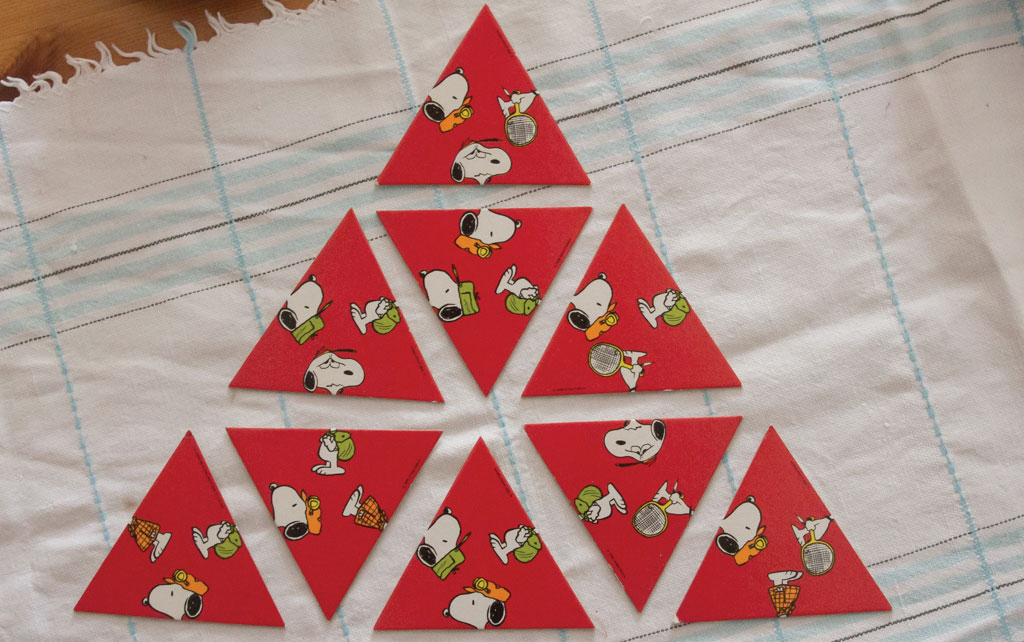This project presents a simple solver for an old puzzle published by Heye puzzle, which I recently came across. Apparently, the game is available in different flavors (triangles, squares).
The version of puzzle used here consists of nine equilateral triangles with lower and upper parts of figures printed on them. The objective is to form a large triangle in such a way that the shapes and colors of the parts of the figures on neighbouring triangles match.
The following triangles come with the game:
/ \ | / \
/ \ | / \
/HO BW\ | /a b\
/ \ | / 0 \
/ HW \ | / c \
----------- | -----------
/ \ HW / \ | / \ c / \
/ \ / \ | / \ 1 / \
/BG HG\BG HG/HO BW\ | /a b\b a/a b\
/ \ / \ | / 2 \ / 8 \
/ HO \ / BO \ | / c \ / c \
----------- ----------- | ----------- -----------
/ \ BW / \ HO / \ | / \ c / \ c / \
/ \ / \ / \ | / \ 3 / \ 6 / \
/BO BG\BG HO/BO HO\BG HG/BW BG\ | /a b\b a/a b\b a/a b\
/ \ / \ / \ | / 4 \ / 5 \ / 7 \
/ HO \ / BG \ / HW \ | / c \ / c \ / c \
----------- ----------- ----------- | ----------- ----------- -----------
All triangles (cf. the image above) Indices of the triangles and sides
where
- HO -- head orange
- HG -- head green
- HW -- head white
- BO -- body orange
- BG -- body green
- BW -- body white
The solver uses backtracking in order to find the solutions. Given a set containing nine triangles, a total of 362880 permutations exist to form a large triangle. For each of these (spatial) permutations, every triangle can be rotated in one of three ways (0, 120, 240 degrees), which amounts to 19683 possible combinations. That means, all in all approximately 7.1e9 different possible configurations exist. Backtracking helps to discard most of these (possible but wrong) configurations.
When evaluating one of the configurations above, nine pairs of neighboring triangles are tested. A test is valid if one of the neighboring triangle has a head of figure printed on it while a body printed on the other triangle and both are of the same color.
According to the publisher of the game, two solutions exist. The solver will find six solutions, though. That is because each of the two solutions can be rotated into three different position.
Just run
$ python ./the_magic_triangle.py deck_of_cards.csv edge_matches.csv
For the impatient, the solutions can also be found here.
